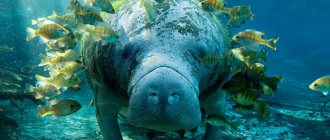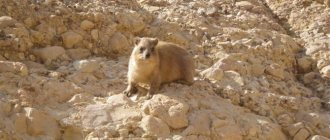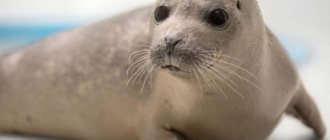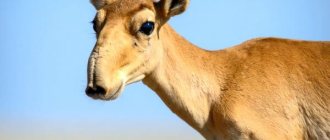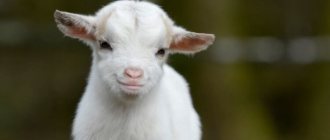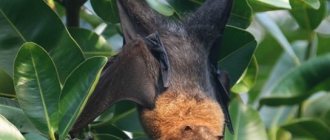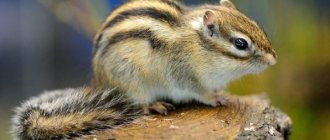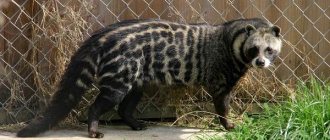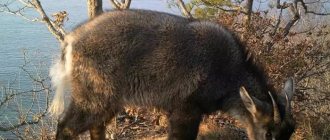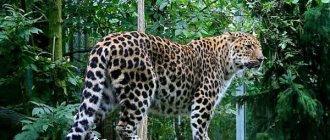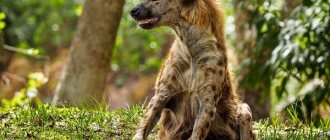- Wild animals
- >>
- Mammals
The manatee is a representative of marine flora and fauna.
They are sometimes called water or sea cows, as they are huge in size, and are distinguished by their kindness and very calm, measured and friendly character. Another similarity with terrestrial ungulates is that manatees are herbivores. Researchers claim that these animals are endowed with the ability to solve experimental problems in the same way as dolphins. There is also a comparison between the animal and elephants. This is due not only to the dimensions, but also to some physiological similarities. Today, these kindest, amazing animals are on the verge of complete extinction.
Origin of the species and description
Photo: Manatee
These representatives of the flora and fauna belong to chordate mammals, are representatives of the sirenian order, and are classified into the genus manatee and the species manatee.
Some researchers believe that in ancient times this species was divided into almost twenty subspecies. However, today only three of them live in natural conditions: Amazonian, American and African. Most pre-existing species were completely extirpated by the end of the 18th century.
Video: Manatee
The first explorer to mention manatees was Columbus. As part of his team, he observed these representatives in the New World. Members of his research vessel claimed that the huge animals reminded them of sea mermaids.
According to the writings of a Polish zoologist, researcher and scientist, manatees previously, until 1850, lived only in the area of Bering Island.
There are several theories about the origin of these amazing animals. According to one of them, manatees descended from four-legged mammals that lived on land. They are one of the most ancient marine inhabitants, as they are believed to have existed more than 60 million years ago.
The fact that their ancestors were land mammals is evidenced by the presence of rudimentary claws on their limbs. Zoologists claim that their direct and closest relative on earth is the elephant.
Appearance and features
Photo: Animal manatee
The appearance of the manatee is truly impressive. The length of the spindle-shaped body of the sea giant reaches about three meters, body weight can reach one ton. Elephant seals have pronounced sexual dimorphism - females are larger and heavier than males.
They have large and very powerful paddle-shaped tails that help them move through the water.
The animals have small, round, deep-set eyes, which are protected by a special membrane, as a result of which manatees do not have very good vision, but quite good hearing, despite the fact that manatees do not have an outer ear. Aquatic mammals also have a very acute sense of smell. The nose is massive, covered with small, hard whiskers. They have flexible, movable lips that make it easy to grasp plant food.
The head smoothly flows into the body, practically merging with it. Due to the fact that animals' teeth are renewed throughout their lives, they perfectly adapt to a changing diet. Strong, powerful teeth easily grind any plant food. Just like elephants, manatees change teeth throughout their lives. New teeth appear in the row behind, gradually replacing the old ones.
Unlike other mammals, they have six cervical vertebrae. In this regard, they are not able to turn their heads in different directions. If it is necessary to turn their head, they turn their whole body at once.
The massive chest allows animals to hold the body in a horizontal position and reduces its buoyancy. The limbs of animals are represented by flippers that are small relative to the size of the body. They are somewhat narrowed at the base and widened towards the edge. There are rudimentary claws at the tips of the flippers. Flippers serve as a kind of arms for animals, with the help of which they move through water and on land, and also help to grab food and send it to the mouth.
Where does the manatee live?
Photo: Sea Manatee
The manatee's habitat is the western coast of the African continent, along almost the entire coast of the United States. Most often, animals live in small and not too deep bodies of water. They prefer to choose those reservoirs where there is a sufficient amount of food supply. These can be rivers, lakes, small bays, lagoons. In some cases, they can be found in coastal zones of larger and deeper bodies of water at a depth of no more than three and a half meters.
Manatees can live freely in both fresh and sea water. All sea cows, regardless of species, prefer warm water, the temperature of which is at least 18 degrees. It is uncharacteristic for animals to move and migrate frequently and over long distances. They rarely travel more than 3-4 kilometers per day.
Animals prefer to sway in shallow water, occasionally rising to the surface to take air into their lungs.
Animals are very sensitive to low water temperatures. If the temperature drops to less than + 6 - +8 degrees, this can cause the death of animals. In this regard, with the onset of winter and colder temperatures, animals move away from the shores of America to South Florida. Animals often accumulate in the region where thermal power plants are located. When the warm season arrives again, the animals return to their natural habitat.
Range, habitats
Typically, manatees live in seas, rivers and oceans along the coasts of several countries. The African manatee lives along the coasts and rivers of West Africa. The Amazonian lives in the Amazon River drainage.
Their distribution is about 7 million square kilometers, according to the International Union for Conservation of Nature (IUCN). The West Indian manatee lives in the southern and eastern United States, although a few strays are known to have arrived in the Bahamas.
Return to content
What does a manatee eat?
Photo: Manatee sea cow
Despite their enormous size, manatees are herbivores. To replenish the body's energy costs, one adult requires about 50-60 kilograms of plant food. This amount of vegetation is ground by powerful and strong teeth. The front teeth tend to wear down. However, the teeth behind move in their place.
The animals spend most of the day feeding in the so-called sea pastures. They eat mainly in shallow water, moving almost along the bottom. When absorbing food, manatees actively use their flippers, using them to scoop up algae and bring it to their mouth. Sea cows are most active in the morning and evening. At this time they eat food. After a heavy meal, they prefer to have a good rest and sleep soundly.
Diet diversity depends on the region where it lives. Animals that live in the sea prefer to eat sea herbs. Manatees, which live in freshwater bodies, feed on freshwater vegetation and algae. Often, in order to provide themselves with enough food, animals have to migrate to other regions in search of vegetation. Any type of marine and aquatic vegetation can be used as food supply. In rare cases, the vegetarian diet is diluted with small fish and various types of aquatic invertebrates.
Nutrition
Manatees are herbivores and eat over 60 different freshwater (alligator weed, water lettuce, musk grass, floating hyacinth, hydrilla, mangrove leaves) and marine plants. Gourmets love algae, sea clover, and turtle grass.
Using its divided upper lip, the manatee deftly manages food and usually eats about 50 kg per day (up to 10-15% of its own body weight). The meal lasts for many hours. With such a volume of consumed vegetation, the “cow” has to graze for up to seven, or even more, hours a day.
To cope with the high fiber content, manatees use hindgut fermentation. Sometimes “cows” steal fish from fishing nets, although they are indifferent to this “delicacy”.
Features of character and lifestyle
Photo: Manatee and man
Sea cows most often live alone or in pairs. Animals are not tied to any specific territorial zone, so they have no reason to quarrel and determine a leader, or defend their territory. Large concentrations of manatees can be observed during the mating season or in a region where there are warm water sources or direct sunlight warms the water. In nature, a group of manatees is called an aggregation. The number of aggregations rarely exceeds six to seven individuals.
The appearance of the animals creates the feeling of scary, ferocious giants. However, the appearance does not correspond to reality. The animals are quite docile, friendly, and not at all aggressive. Manatees are characterized as very curious animals that easily trust even humans, and are not at all afraid of direct contact with him.
The average speed at which they usually swim is 7-9 km/h. However, in some cases they can reach speeds of up to 25 km/h.
Animals are not able to stay under water for more than twelve minutes. However, they do not spend a large amount of time on land. Mammals spend most of their lives in water. To stay in a body of water for a long time, they need air. However, to saturate their lungs with oxygen, they rise to the surface and simply inhale it through their nose. Animals feel most comfortable at a depth of one and a half to two meters.
Migration
All species of manatees are thermophilic. A decrease in water temperature to +6-7 °C leads to the rapid death of sirens. Therefore, with the onset of the winter season off the coast of the United States, manatees go to South Florida, where they look for warm natural springs in the rivers. They can also collect near spillways of thermal power plants.
With the onset of warm days, the animals again disperse throughout their range. Not fans of long journeys, manatees swim leisurely in the water column, looking for the richest pastures of algae. They are the only aquatic mammals that feed exclusively on plant matter. In addition to sea and freshwater algae, they can also pinch off twigs from coastal thickets, slightly diversifying their menu.
Social structure and reproduction
Photo: Baby manatee
Males reach sexual maturity only 10 years after birth, females become sexually mature much earlier - after reaching five years. The breeding season is not seasonal. Despite this, the largest number of babies are born in the autumn-summer period. Most often, several males compete for the right to enter into mating relations with a female. The courtship period continues until she gives preference to one.
After mating, pregnancy occurs, which lasts from 12 to 14 months. A newborn elephant seal reaches 30-35 kilograms and 1-1.20 meters in length. Cubs appear one at a time per set, extremely rarely in the amount of two. The birth process takes place underwater. Immediately after birth, the baby needs to get to the surface of the water and take air into his lungs. His mother helps him with this.
Newborns adapt quite quickly to environmental conditions and can independently consume plant foods, starting from the age of one month. However, the female feeds the cubs with milk up to 17-20 months.
Zoologists say that these animals have an incredibly strong, almost unbreakable bond between the baby and the mother. They are attached to her throughout almost their entire lives. The average lifespan of animals in natural conditions is 50-60 years. Zoologists note that manatees have rather low reproductive activity, which also negatively affects the number of animals.
Natural enemies of manatees
Photo: Animal manatee
It is noteworthy that in natural habitats these representatives of flora and fauna have almost no enemies. This is due to the fact that in the depths of the sea there are practically no animals that are larger and more powerful than manatees. The main enemy remains man and his activities. It was people who caused the almost complete disappearance of sea cows.
People found these representatives of marine flora and fauna back in the 17th century and began to mercilessly destroy them. For people, not only tasty meat, which at all times was considered a delicacy, was valuable, but also very tender and soft fat. It was used on a large scale in alternative medicine; ointments, gels, and lotions were prepared on its basis. Animals were also hunted for their skins. There are many reasons for the extinction of animals, in addition to poaching and deliberate killing by humans.
Reasons for the extinction of the species:
- animals die due to the fact that, moving along the surface of the bottom, they eat vegetation in which fishing gear is located. By swallowing them along with algae, animals doom themselves to a slow, painful death;
- Another reason for the death of manatees is pollution and destruction of their natural habitat. This occurs due to the release of hazardous waste into water bodies or the construction of dams;
- yachts and other sea vessels pose a threat to the life and population of manatees due to the fact that the animals do not always hear their approach. many animals die under the propeller blades of sea vessels;
- small, fragile manatees can become prey for tiger sharks or caimans in tropical rivers.
Population and species status
Photo: Manatees
Today, all species of manatee are listed in the International Red Book as an endangered species. Zoologists suggest that in the next two decades the number of animals will decrease by about a third.
Data on the abundance of elephant seals is quite difficult to obtain, especially for species that live in inaccessible, impenetrable regions of the Amazon coast. Despite the fact that there is no exact data on the number of animals today, zoologists suggest that the number of Amazonian manatees is just under 10,000 individuals.
Animals that live in Florida, or Antillean representatives, were listed in the Red Book back in 1970.
Scientists made approximate calculations and found that among all individuals existing in natural conditions, approximately 2,500 are sexually mature. This fact gives reason to believe that every two decades the population will decline by approximately 25-30%.
Over the past 15 years, tremendous work has been carried out to increase the number and preserve the species, which has yielded results. As of March 31, 2022, manatees have changed their status from endangered to threatened. Fishermen, poachers and destruction of natural habitats are still causing the decline in animal numbers.
Long-lived manatee from the Bradenton Aquarium
The oldest manatee living in captivity was Snooty from the South Florida Museum aquarium in Bradenton. “Veteran” was born at the Miami Aquarium and Tackle on July 21, 1948. Raised by zoologists, Snooty had never seen wildlife and was a favorite of local children. The permanent resident of the aquarium died two days after his 69th birthday, on July 23, 2017: he was found in an underwater area used for a life support system.
The long-lived manatee became famous as a very sociable manatee. In photographs he often shows off with workers feeding the animal; in other photographs, the “old man” watches visitors with interest. Snooty has been a favorite subject for research into the species' skills and learning abilities.
